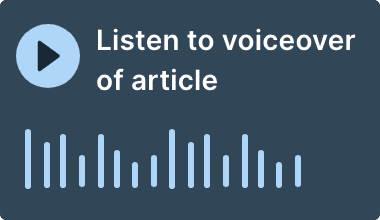According to the FT, hedge funds have lost $43 billion during the month of November as their short positions in bond and stock markets turned against them. During the vicious drop in bond prices throughout the month of October, which negatively affected most share prices, massive short positions were entered into by such hedge funds whose mission it is to profit from falling prices of bonds or shares, as they hope to buy them back at lower prices than their sales proceeds.
There were good reasons for hedge funds’ negative outlook in the past month or two. Not only were central banks careful not to raise expectations whereby interest rate cuts were on the horizon, but bond prices underwent sharp falls for various reasons, both fundamental and technical. As this spread across financial markets, it was easy to conclude that the path of least resistance was for further drops in the prices of bonds and shares. For hedge funds it was a no-brainer as they set their money to work.
This is the simple explanation of events in financial markets during the month under review. As many a simple explanation, it dodges the questions of what happens in the longer term. This is normal at this time of year, when observers, investors, punters and the media have reduced their financial time horizon to a few weeks, to coincide with the end of the year, before a fresh look at markets as the new year commences.
Nonetheless, events in financial markets during the month of November could not have been more different from those in the preceding month. The vicious rally in world government bond prices, duly accompanied by an equally surprising rise in share prices, caught many observers and investors by surprise. Media articles about the losses suffered by hedge funds abound. Of note is the “yes, but…” rhetoric from journalists in which every positive development in financial markets is followed by words of caution and warning.
The continuing downtrend in inflation and its expectations (on the whole) was also accompanied by words of warning from central banks. Whilst acknowledging that their work has been a success insofar as taming inflation is concerned, many of these central bankers also state that “the last mile is the most difficult” and that achieving their desired inflation rate of two per cent might well be on the horizon, but has not (yet) been achieved.
Many such actors often forget how share prices are, by design, in the habit of looking across the valley. Bull markets usually begin during periods of uncertainty and habitually catch market participants by surprise. At the same time, the beginnings of a bear market are rarely accompanied by universal pessimism on the part of investors. Herein lies the dichotomy. As a whole, markets need to be taken seriously in what they predict for the medium and sometimes long term; but individual market participants are often caught off guard and wrong-footed. Respect for the former need not be accompanied by respect for the latter; on the contrary….
This dichotomy was much in evidence during the year soon drawing to a close. There have been numerous occasions when bond markets were bullish while all other agents, from central banks to media commentators to hedge funds and other economic actors, were pessimistic. The same, incidentally, applied in the opposite direction.
Macro investors will rightly enquire as to the triptych of growth, liquidity and valuation when assessing their chances of increasing the value of their portfolio as we enter 2024.
In short, economic growth is more (or less) in evidence, if moderate. Liquidity is currently (and has been for longer than pessimists would agree) encouraging, not least in recent weeks when bond yields have sharply reversed the painful trajectory they suffered during the month of October. This was helped by the sharp fall in the US dollar’s external value (which benefits economic activity in emerging markets, whose borrowers in dollars have suffered pain as the relentless rise in the dollar’s external value negatively affected the value of their dollar-based financial commitments). And finally, valuation. This topic was and always will remain the subject of intense discussion and differences of opinion.
Such differences of opinion are heavily influenced by the investment style of the protagonists and, in particular, by their time horizon. Value (and crypto-value) investors’ time horizon barely stretches beyond one or two years. This is evidenced by the investment horizon visible in the work undertaken by sell-side analysts. For these “players”, dividend yields and price-to-earnings (P/E) ratios constitute, together, the holy grail of investing. Satisfying short-term shareholders by distributing ever-increasing yearly dividends ranks above everything else and obfuscates where the true investment risks lie. That such distributions are accompanied by share prices going “ex-dividend” worries these investors not. We have called the obsession with dividend yields the “dividend yield mirage”, one that needs to be treated with suspicion rather than cheered. It often sows the suspicion of future ex-growth when paying dividends is the last resort.
The valuation homework done by Quality Growth investors is of an entirely different nature. P/E ratios do not indicate the fair value of a true Quality Growth business and will indeed usually be too high for value investors. That P/E ratios for Quality Growth investors are habitually too high for value investors precisely because the return to shareholders reflects the quality and growth characteristics of such a portfolio, is largely ignored. Too expensive is too expensive.
2022 was a brutal year for all investors, those in Quality Growth businesses included. But that was not the reflection of a deterioration of the latter’s underlying growth and quality. Rather, relentlessly rising bond yields negatively affected the rate at which future cash flows were discounted to the present. And this irrespective of whether such businesses were capital-intensive and suffered over-indebted balance sheets or asset-light with fortress balance sheets. It represented the calculator taking charge over the investment mind. Such things happen and, if properly recognised, place the opportunity to buy superior companies on a plate to the investor.
It is for these and many other reasons that Quality Growth investors have seen decent investment returns thus far in 2023. The Ten Golden Rules that accompany such investors will continue to bail them out in the future, as they have in the past.
P. Seilern
November 25th, 2023
Any forecasts, opinions, goals, strategies, outlooks and or estimates and expectations or other non-historical commentary contained herein or expressed in this document are based on current forecasts, opinions and or estimates and expectations only, and are considered “forward looking statements”. Forward-looking statements are subject to risks and uncertainties that may cause actual future results to be different from expectations. Nothing in this newsletter is a recommendation for a particular stock. The views, forecasts, opinions and or estimates and expectations expressed in this document are a reflection of Seilern Investment Management Ltd’s best judgment as of the date of this communication’s publication, and are subject to change. No responsibility or liability shall be accepted for amending, correcting, or updating any information or forecasts, opinions and or estimates and expectations contained herein.
Please be aware that past performance should not be seen as an indication of future performance. Any financial instrument included in this website could be considered high risk and investors may not get back all of their original investment. The value of any investments and or financial instruments included in this website and the income derived from them may fluctuate and you may not receive back the amount originally invested. In addition stock market fluctuations and currency movements may also affect the value of investments.
Get the latest insights & events direct to your inbox
"*" indicates required fields





